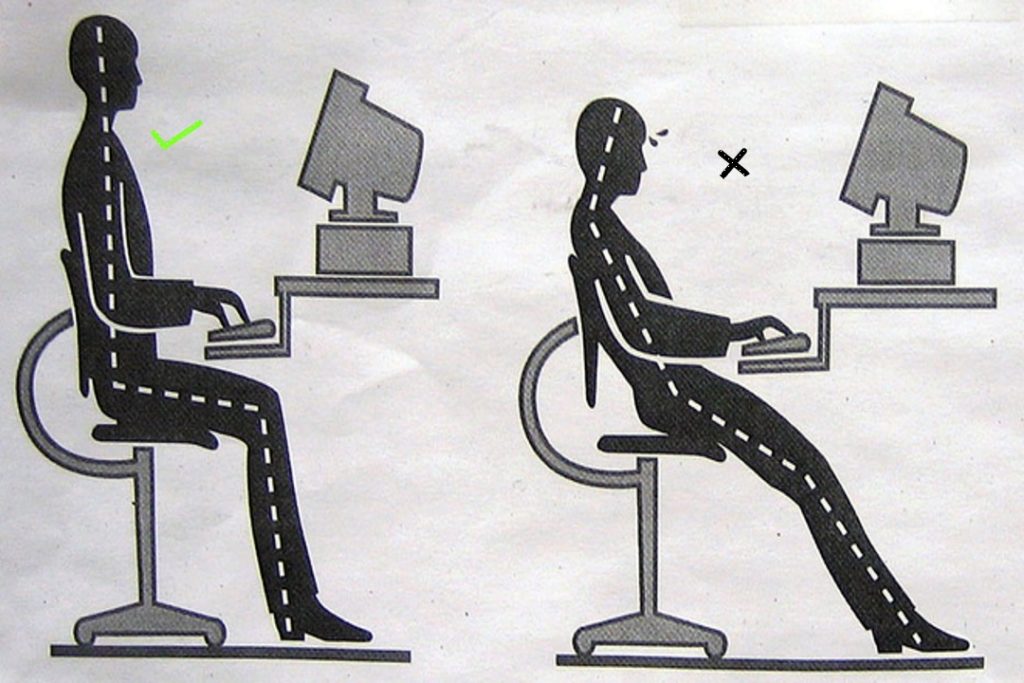
Contents
Sitting with the Right Leg Height
When you sit in a chair for a long period of time, it is important that blood circulation to your legs continues. To this end, you should sit so that your thighs are parallel to the floor when your lower legs are perpendicular to the floor. In other words, the front of your seat should not cut off the blood supply in your legs. You can always use a little foot platform to lift up your feet and legs if you need to have your seat higher than otherwise permissible.Sitting Back with Proper Neck, Shoulder and Upper Back Support
It is very important to support your neck and shoulders as you read. Hunching forward is almost guaranteed to cause neck and back pain and reduce your focus, concentration and the amount of time you can read. The proper approach is to sit back with your neck and shoulders supported. This means you are sitting against support just past the vertical position. You will note that your relaxed line of vision rises up when you do this. Your seat and the back of your chair should be cushioned.Head Tilt
Do not bend your head down to read. You should not lower your head to read. This causes a lot of neck stress. Set the height for your seat, which you may be able to raise or lower.Elbows
Do not raise your elbows awkwardly to type. Doing so will cause a lot of stress on your shoulders. Ideally, you should rest your elbows on side rests or side arms, adjusted so that the weight of the arms is off the shoulders.Wrist Position
Ideally, when you type, your forearms and the back of your hands should be all on one flat line. Your laptop can be in your lap, or you can use an extended keyboard if necessary, placed in a comfortable position, like on a lower keyboard tray or on a pillow in your lap. With an extended keyboard, your laptop can be on a table and at some distance from the extended keyboard. If you need to raise your hands and forearms substantially, tilt the back of the keyboard up to compensate so that the flat line discussed above is maintained.Forearms
Do not type with your forearms below your armrests. This is also very awkward. If you are sitting in an armchair, place your extended keyboard or laptop on a small pillow or attaché on your lap. This will allow you to use the armrests and type with level forearms. Your mouse can rest on a small side table. You can quickly place the keyboard or laptop on this side table or main table if you need to get up.Lumbar Support
Make sure your lumbar area is supported by a small pillow or bend in the back of your chair. Otherwise, you are going to have pain.In-Line Reading and Typing
As you work you should not have to turn your head from left to right. The centers of your keyboard screen and workspace (for books or papers) should all line up on the same center line. Turning your head repeatedly is a sure way to hurt yourself and lose concentration and accuracy, especially when editing, transcribing or entering data, or taking notes from reading.By far the easiest and quickest way for anybody to improve his or her reading concentration is to remove physical discomfort when reading. Also, typing notes as you read greatly increases concentration and comprehension.For illustrations click here